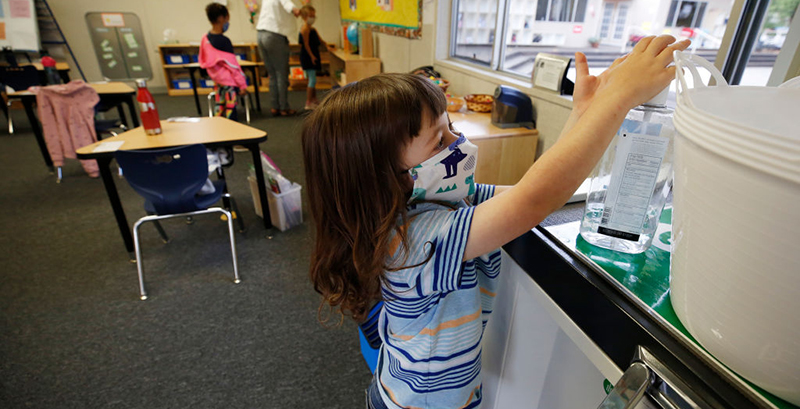40,000-Person Iceland Study Finds Youth Under 15 Half as Likely to Catch and Spread Coronavirus

Updated
A new 40,000-person study from Iceland has found that children under 15 are about half as likely as adults to be infected with COVID-19 and, when they do catch the virus, only half as likely as adults to transmit it to others.
As U.S. officials grapple with school closures in the midst of the country’s deadliest surge in coronavirus cases to date, and as failure to control the virus has led to over 316,900 confirmed cases in K-12 schools, the findings deliver the most definitive numbers thus far on youth infection and transmission. The results come from contract tracing and genetic sequencing conducted by Iceland’s Directorate of Health and Reykjavik-based human-genomic company deCODE genetics.
“[Children] can and do get infected and transmit to others, but they do both less frequently than adults,” Kári Stefánsson, deCODE’s chief executive, told National Geographic.
The findings from Iceland build on the scientific consensus that age matters when it comes to catching and spreading COVID-19. Some studies, however, put the immunological threshold even earlier, at 10 to 12 years old. As children begin to go through puberty, it appears that their risk of contracting and transmitting the virus increases. Data from a national tracker of school coronavirus cases called the COVID Monitor, which includes case numbers from over 7,000 U.S. school districts, find that the rate of positive cases for high school students is nearly three times that of elementary school students.
As metropolitan school systems such as Chicago, Philadelphia, and the nation’s largest district, New York City, use these numbers to guide their reopening strategy, many worry that the teachers who share the classroom with younger students are not out of harm’s way. Educators’ fears of being sickened by the virus have at times pitted demands from teachers unions to keep schools remote against the needs of stressed-out and concerned families. Many students’ grades have plummeted and, in extreme cases, entire classes have fallen behind.
While student infections are far lower in elementary school than in high school, teacher case rates do not vary significantly by grade, national data show.
“If you’re concerned about staff exposure, then elementary schools aren’t that great,” Rebekah Jones, who runs the COVID Monitor, told The 74.
Emily Oster, Brown University professor and curator of the COVID-19 School Response Dashboard, interpreted the staff case numbers differently, chalking them up to community spread.
“The reason for [the comparable rates among teachers across grade level] is likely that infections are occurring outside school,” she told The 74 over email. “So it just suggests the outside activities are similar in the two groups of teachers.”
Meanwhile, the Food and Drug Administration late Friday approved a COVID-19 vaccine formula from Pfizer and its partner BioNTech, a major step toward thwarting the pandemic in the U.S. It remains unclear, however, whether young people under 16 will have access to the shots and whether teachers will get priority in line, meaning the science on school-level transmission will remain critical.
Scientific studies offer preliminary insight on why youth and adults interact with the virus differently. One potential explanation, based on an antibody study published in Nature Immunology, lies in young people’s dynamic immune system, which uses “new T-cells” that may be able to adapt to COVID-19 as opposed to adults’ “memory T-cells” that rely on exposure to past contagions and are not as effective.
“School-age children, they’re designed to respond to new pathogens efficiently,” Donna Farber, a Columbia University immunologist and study co-author, told The 74 last month.
Get stories like these delivered straight to your inbox. Sign up for The 74 Newsletter

;)

